In a recent article/video we looked at the UK’s newly selected Alternative Individual Weapon system, the L403A1. The Knight’s Armament KS-1 was selected as the new rifle for the Ranger Regiments of the Army Special Operations Brigade and for elements of the Royal Marines Commandos.
One question which frequently appeared in the comments was “can it fit a bayonet?” This is a good question because the British Army is known to be a proponent of bayonet use with a long history of using it to great effect from the 1600s right through to recent conflicts in Iraq and Afghanistan.
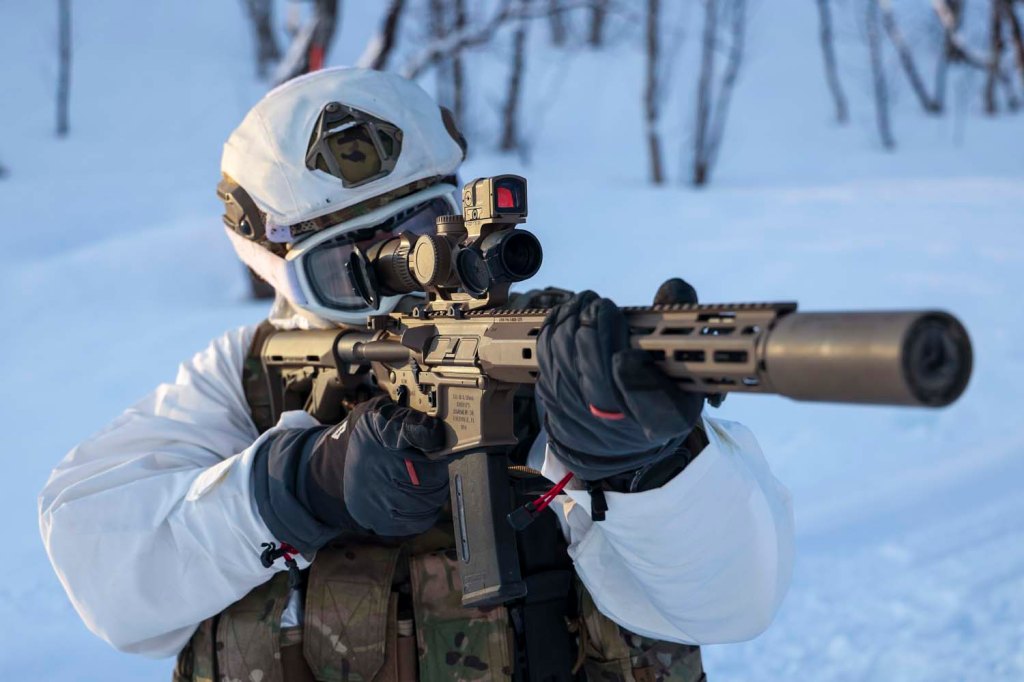
The short answer to the question is – yes. The longer answer is a bit more complex. Just a week after the selection of the new rifle was announced Knights Armament displayed one of the rifles with a bayonet fixed at the DSEI 2023 exposition in London. This naturally caught some attention.

However, when the selection of the L403A1 was initially announced a breakdown of the Alternative Individual Weapon system’s accessories and ancillaries was released. This included: a Vortex 1-10x LVPO, an Aimpoint ACRO and a QDC/MCQ-PRT [Quick Detach Coupling/Mini Close Quarters–Pressure Reduction Technology] suppressor along with a sling, a vertical front grip, and a Surefire weapon light but noticeably it did not include a bayonet.
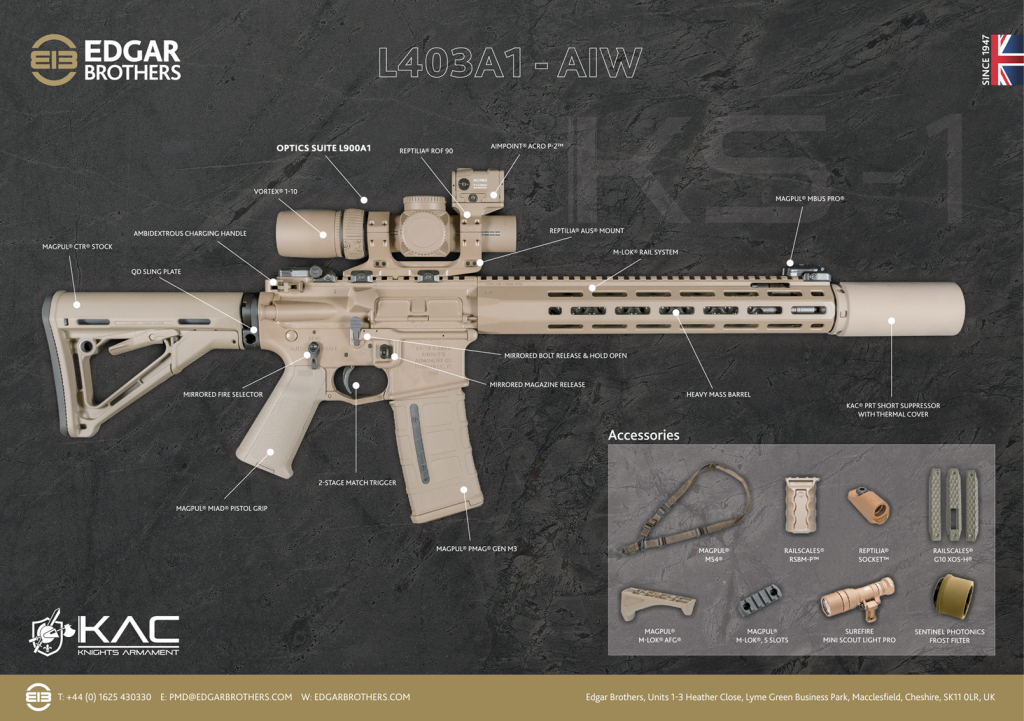
The ability to fix a bayonet was not part of the weapon’s original requirements and it was not stipulated by the Rangers or Commandos. Instead, Knight’s Armament developed the capability themselves, perhaps recognising the UK’s fondness for the bayonet and the British Army’s long history of its use as both a training aid and as a weapon of war.
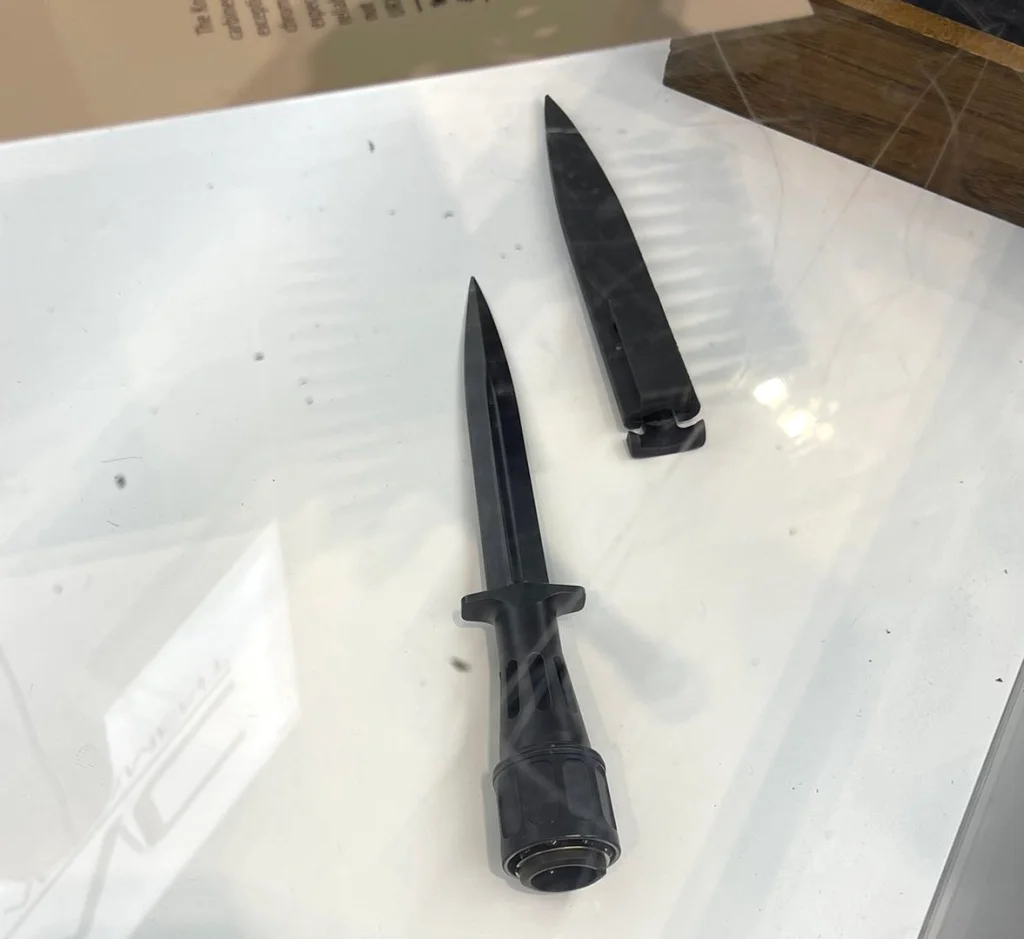
TAB reached out to Knight’s Armament about the bayonet and they confirmed that “the bayonet was designed in anticipation of a potential need, though not required as part of the contract.” The bayonet seen fixed to the rifle at DSEI was apparently the first iteration of the design which according to Knight’s Armament “used the same mounting mechanism as the suppressors” but a new “revised design uses an attachment mechanism that is more similar to the SA-80 bayonet attachment/retention design.”
Essentially, rather than using the suppressor’s ‘Quick Detach Coupling’ system the newer iteration of the bayonet uses a pivoting catch. The quick-detach method used by the suppressor involves the suppressor being rolled one way until the index pin seats in a notch before tightening it by twisting it the other direction.
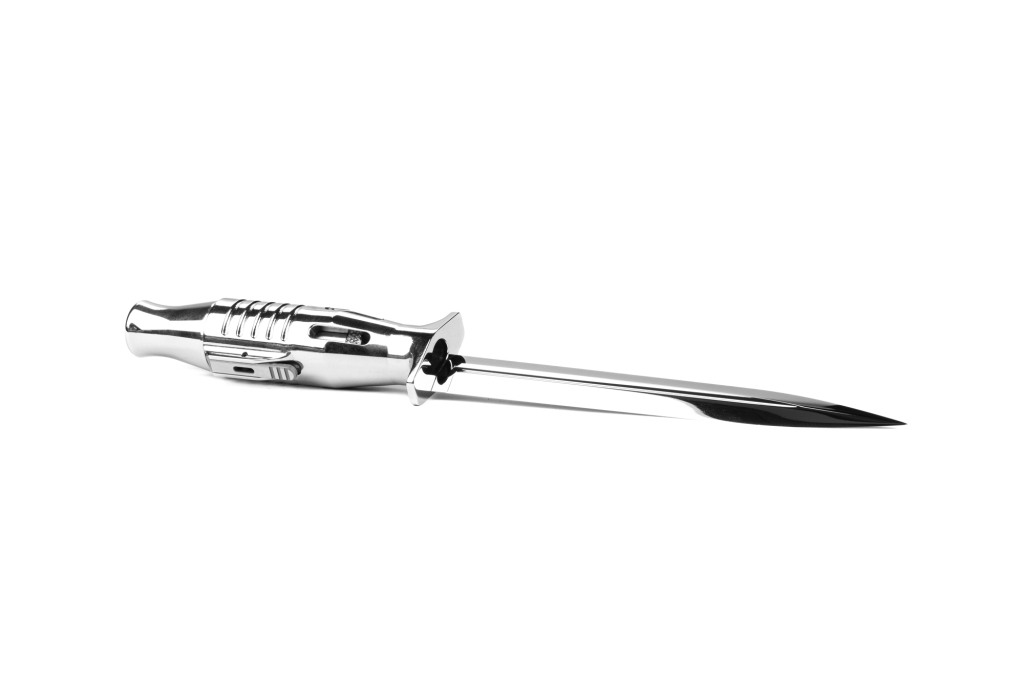
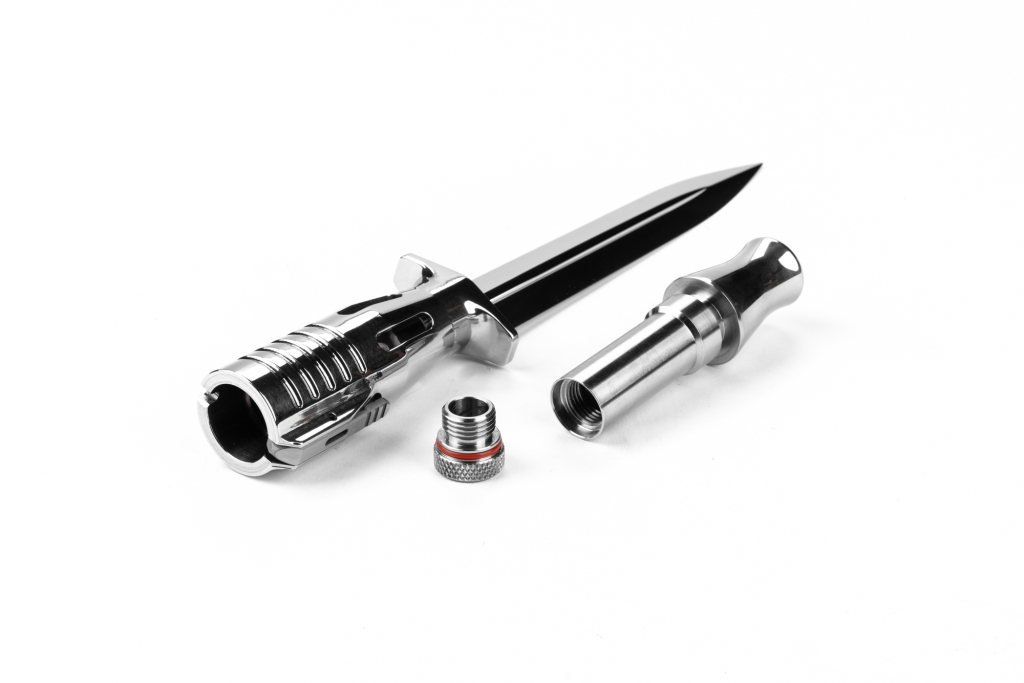

The new iteration of the bayonet fits over the rifle’s 3-prong QDC muzzle device and uses the same style of catch system as the SA80. Knight’s Armament explained that “the redesign was a refinement of an initial concept after some basic testing and feasibility evaluation.” The bayonet haven’t undergone any serious testing as they’re still in the development phase. A chromed version of the latest iteration of the bayonet was also displayed at DSEI and has a removable pommel piece that can act as a small storage space and makes the bayonet more comfortable for use as a knife.
The bayonet’s blade is offset to the left side with a corresponding hole which lines up with the muzzle.
While bayonets aren’t currently planned to be issued with the rifles, the requirement might develop once they enter service. If, in the future, the UK Ministry of Defence requested a bayonet for the new rifles it seems that Knight’s Armament could be able to oblige.




